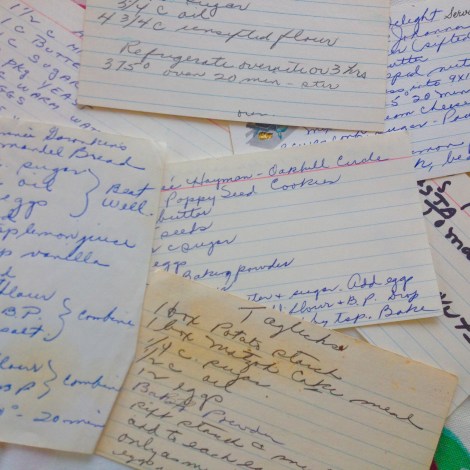It’s Geography Awareness Week! Celebrate & Learn Through Food
Sarah Newman lives in Los Angeles, California, where she writes the blog Neesh Noosh: A Jewish Woman’s Year Long Journey to Find Faith in Food. She enjoys shopping at her local farmers markets and growing herbs and produce in her garden.



When did your family immigrate to America? What foods are commonly eaten in the countries from where your family emigrated? Do you eat them?
I live in Los Angeles, a city with abundant produce grown locally year-round, and a plethora of restaurants offering nourishing “California cuisine.” But I still cook my grandmother’s heavy Russian Jewish dishes. Why? And why have I changed some of them?
During this year’s Geography Awareness Week, it’s important to talk about the cultural geography of food. As people migrate, their food traditions adapt and evolve through interactions with people of other cultures, traditions, and ethnicities.
What types of dishes have you created from different cultures?

As I leaf through my grandmother’s tattered, well-worn, bright red recipe box, I see much of her life—shifting tastes, influences of friends and family, and the introduction of new ingredients. As a girl raised in an Orthodox Jewish, kosher household, she never ate meat and dairy together, or sampled shellfish.
But in her recipe box, I find recipes for shrimp, veal Parmesan, and seafood dips. When did she move away from keeping kosher to eating everything? And, as her cooking progressed through the decades, I find recipes with new ingredients introduced in those eras. The 1970s brought her the avocado—in a dip with catsup. Ever heard of it? Tried it? Want to?
My grandmother always loved to bake Jewish desserts and these recipes never changed. The recipe box is filled with faded cards littered with drops of batter and titles such as Johanna’s lemon bars, Anne’s kuchen, and Tante Chanah’s mandelbrodt.


Do you have a favorite recipe from a relative? Do you eat different foods than the rest of your family?
Reading my grandmother’s recipes connects me to my grandmother and her famous cooking. It can also inspire me to add my own personal touches to make the dish healthier or to add new flavors and tastes that perhaps she never had access to in her life. Try my grandmother’s recipe for “mandelbrodt” (similar to a biscotti), for example. I update it by replacing vegetable shortening (Crisco) with coconut oil. And you can make it vegan by using flax instead of eggs.

Our nation’s constantly evolving culinary preferences reflect the fluidity and influence of our immigrant landscape. (Click here to read about how New Orleans’ most recent immigrants are adding their own spices to the city’s famous foods.)
Eating as an American today can be represented by Los Angeles’ hometown culinary hero Roy Choi. Kogi, his initial Korean-Mexican food truck (featuring such items as kimchi quesadillas) has expanded to a successful multi-restaurant enterprise based on foods that are inspired by divergent cultural influences in his life. His food symbolizes life in Los Angeles in 2014, “If L.A. had a song, you’d hear it at first bite. If L.A. had an anthem, you’d find it in your first meal.” (http://kogibbq.com/about-kogi/)
This Thanksgiving, what dishes could you prepare that represent the diversity of people in your city?

